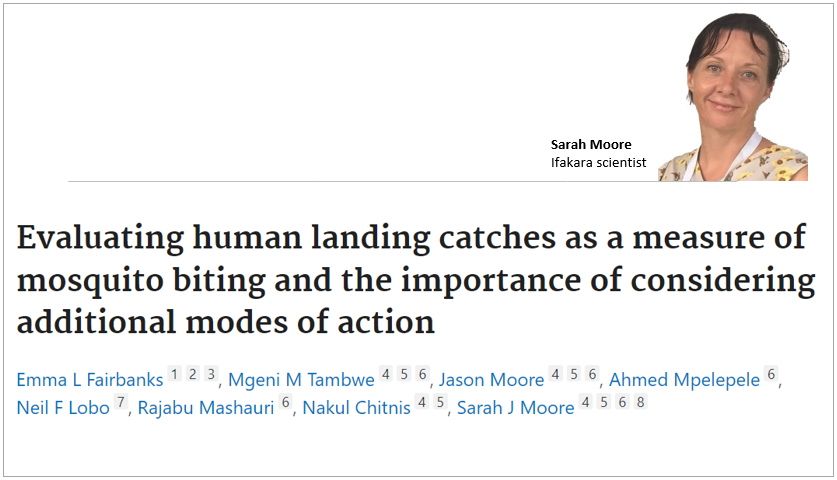
MALARIA: Improving control strategies beyond bite reduction

In the fight against malaria, using effective vector control tools is crucial in managing and reducing the transmission of the disease. In a recent study, scientists have underscored the need to consider additional characteristics beyond the reduction in biting, when evaluating new vector control tools.
Traditionally, the evaluation of vector control tools has been assessed using Human Landing Catches (HLCs), as a standard measure of direct human-vector contact, counting the number of mosquitoes landing on human subjects.
However, recent research suggests that HLCs are not sensitive to measuring other effects beyond landing, hence the need to consider additional measures when evaluating these tools for public health use.
In response to this, a team of scientists led by Emma Fairbanks and Nakul Chitnis from Swiss TPH and Sarah Moore from Ifakara Health Institute, including contributors Mgeni Tambwe, Jason Moore, Ahmed Mpelepele, and Rajabu Mashauri from Ifakara, and Neil FLobo from the University of Notre Dame, conducted a study aimed at investigating the limitations of HLCs and suggesting better ways to measure the effectiveness of mosquito control tools.
“This study has two main aims (1) to evaluate the accuracy of HLCs as a proxy for feeding and (2) to compare the predicted reduction in vectorial capacity when we do and do not consider these additional characteristics,” they wrote in their paper published on the Scientific Reports journal.
Limitations of human landing catches
While HLCs have long been considered the standard for measuring mosquito-human contact, they only measure one part of the problem. They overlook other important factors, such as how many mosquitoes die after landing.
These factors are particularly important for modern vector control tools that employ volatile pyrethroid spatial repellents like transfluthrin, which not only stop mosquito landings but also kill them. Thus, relying solely on HLCs might lead to an incomplete or inaccurate assessment of these tools' effectiveness.
“To achieve this, we analyze previously published semi-field data from an experiment that used HLCs and another where mosquitoes were allowed to feed in the presence of different dosages of the volatile pyrethroid spatial repellent, transfluthrin.”
What were the key findings?
The study found several important results. For non-resistant mosquitoes, HLCs often underestimated the reduction in landings, while for resistant mosquitoes, the results were not clear; sometimes HLCs overestimated.
Moreover, added the scientists, “We find HLCs tend to under-predict the relative reduction in vectorial capacity in susceptible mosquitoes while over-predicting this impact in knockdown-resistant mosquitoes.”
These findings underscore the need to consider a broader range of effects when evaluating vector control tools. Focusing only on landing inhibition, as HLCs do, might not provide a complete picture of a tool's effectiveness, particularly for those incorporating volatile pyrethroid spatial repellents. By looking at mosquito deaths and other effects, we can better understand how effective these tools are, noted the scientists.
Looking beyond bite reduction
While most studies on mosquito repellents focus only on reducing bites, this study highlights the importance of considering how these repellents kill mosquitoes before they bite (preprandial killing) and after they feed (postprandial killing).
Using mathematical models, scientists found that including these secondary effects shows a much greater impact on reducing malaria transmission.
“Using mathematical modelling, we were able to quantify the difference of a hypothetical volatile pyrethroid-based bite prevention tool’s impact on the ability of mosquitoes to transmit malaria when these secondary effects are considered, which were much greater than when only the reduction in biting is considered.”
Recommendations
This study highlights the limitations of using HLCs alone to measure the efficacy of mosquito control tools, the scientists recommend including additional measures, such as mosquito death rates, when evaluating new vector control tools.
Read the publication here.
